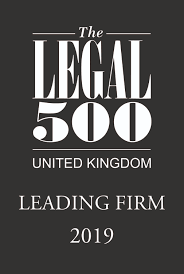The Art of Selling Property

The secret street artist known as “Banksy” has hit the headlines again having confirmed that he is behind the artwork entitled “Aachoo!”, which appeared overnight on the side of a house in Totterdown, Bristol.
What Banksy may not have been aware of as he executed his latest piece of socio-political commentary is that the house in question was in the process of being sold, with media reports suggesting an imminent exchange of contracts. The seller and her family are said to have put the sale on hold for a short period of time while they considered their position, it having been reportedly suggested to them that the appearance of the mural could have vastly increased the property’s value.
The story has put into sharp focus the precarious nature of buying and selling property in this country. Unlike in other jurisdictions, such as Scotland, no legal commitment is made by either the seller or the buyer until contracts are exchanged, which can take place as late as the completion date. This can result in a last minute change of heart, or indeed a last minute change of price, with no compensation due to the disappointed party.
It is reported that, having taken appropriate advice, the owner of the house in this case is now happy to continue with the sale, but is keen to protect the mural and ensure that it stays where it is. It is difficult to know precisely how effective any attempt to restrict the future actions of the buyer might be. Restrictive covenants are often used by sellers to try and prevent certain courses of action, such as unwanted development or potential nuisance, but it is generally accepted that these should only be used to protect the neighbouring land of the party with the benefit of the covenant. There is no suggestion that the owner in this case is retaining any land requiring protection. Another option, if financial recompense is desired, might be to negotiate some sort of overage clause in the transfer of the property requiring the buyer to pay to the seller a set percentage of any uplift in value realised, perhaps by the sale of the mural alone. This would not, however, appear to sit with the seller’s purported wish to see the mural retained in its current position.
Had Banksy struck between exchange and completion of the sale of the property, the options would have been very different. We usually worry about negative events, such as a fire, occurring during this period and rarely consider value-enhancing ones such as this. Where property values are unexpectedly decreased between exchange and completion, the buyer is usually contractually obliged to complete their purchase at the original price and the seller is usually contractually obliged to put the property back into the condition it was in at exchange of contracts. Insurance claims and litigation often ensue while any mortgage lender generally backs out of the whole deal. Where values increase, such as in this case, the buyer is generally the winning party, having secured the property at the pre-enhanced price.
While Banksy’s works have often fetched millions, this latest piece of work seems to have courted only controversy and serves as a stark reminder of the potential pitfalls of our legal system. If you are looking to move house, please contact our experienced Coventry based Conveyancing Team at Askews Legal, for a no obligation quote, by visiting our website www.askewslegal.co or calling us on 024 76 231 000.









